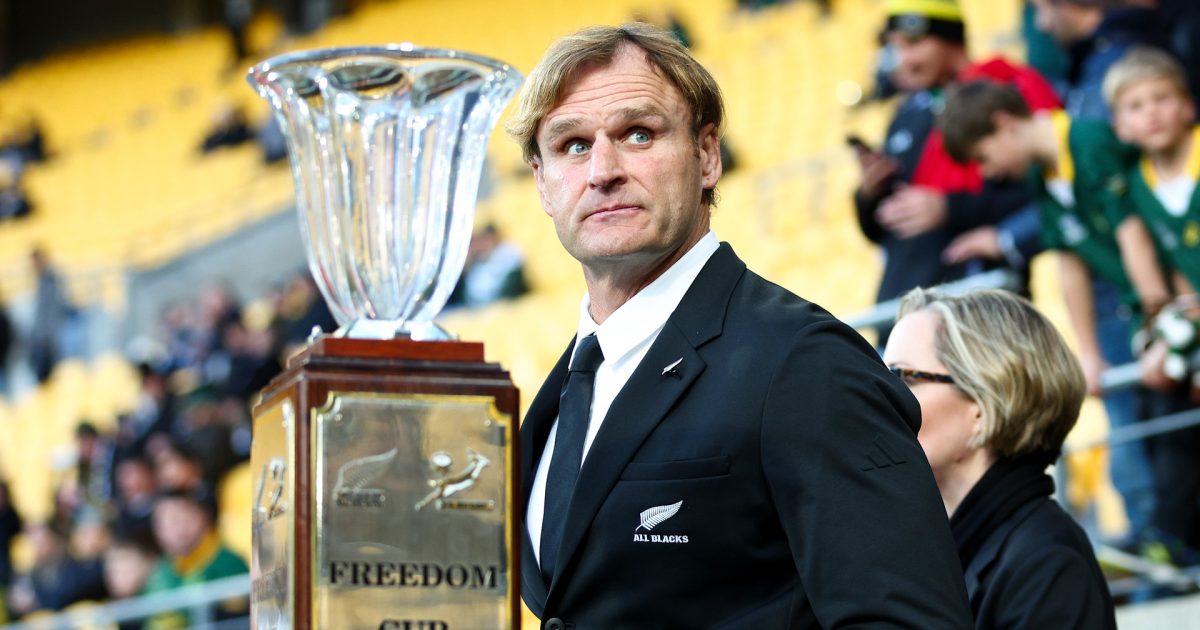The 36-man All Blacks squad for the end of year tour contained no real surprises with just one potential debutant named.
Uncapped Hurricanes prop Tevita Mafileo comes into the squad for the injured Tyrel Lomax, while hooker George Bell has been recalled over Brodie McAlister. With Tupou Vaa’i out for the year with injury, Josh Lord has also been recalled.
There was hope a new winger might get a sniff with Emoni Narawa’s injury, but it was Sevu Reece that got the nod back in over the likes of Caleb Tangitau.
 Braxton Sorensen-McGee’s Top 3 Tries from Rugby World Cup 2025 | RPTV
Braxton Sorensen-McGee’s Top 3 Tries from Rugby World Cup 2025 | RPTV
Top try-scorer at Rugby World Cup 2025, 18-year-old Black Ferns sensation Braxton Sorensen-McGee lit up the tournament. Here are three of her best, and you can also watch all 11 that she scored, now on RugbyPass TV.
 Braxton Sorensen-McGee’s Top 3 Tries from Rugby World Cup 2025 | RPTV
Braxton Sorensen-McGee’s Top 3 Tries from Rugby World Cup 2025 | RPTV
Top try-scorer at Rugby World Cup 2025, 18-year-old Black Ferns sensation Braxton Sorensen-McGee lit up the tournament. Here are three of her best, and you can also watch all 11 that she scored, now on RugbyPass TV.
With Noah Hotham out of action, Blues halfback Finlay Christie is officially back in the squad after being an injury call up during the Rugby Championship. It is no surprise that Otago young gun Dylan Pledger isn’t there.
This is consistent with the coaching group’s previous squads, a steady-as-she-goes approach with slow introductions of new players. We’ve seen this since day one.
If there was ever a time to mix things up and go with fresh names, it was 2024. Robertson and his coaching staff were a new regime and it was the first year in a new World Cup cycle. That lends itself to regeneration.
But instead, Robertson backed a large number of Ian Foster’s old squad to start the year which was a surprise. Veterans TJ Perenara and Sam Cane were given swan song tours, despite never being in contention for the 2027 Rugby World Cup.
Uncapped players were brought into a ‘shadow’ squad, not named initially but drafted in as ‘injury cover’ and then slowly introduced to international rugby.
The 10 new caps last year was historically high by the All Blacks, it just didn’t feel like it due to the pace they were introduced and how much time they were given. By contrast, Ian Foster had seven debutants in 2020.
But out of the 10 new names, only Wallace Sititi and Cortez Ratima really took hold of a starting role. Billy Proctor got one start against Fiji, and then wasn’t seen for the rest of the year.
This approach has continued in 2025 with the likes of Leroy Carter, who was not named in the first July squad, and again with blindside Simon Parker, who was missing from the French series.
Both have now played multiple Tests as starters after debuting through the Rugby Championship. Fabian Holland is one of the rare exceptions, who was named in the July squad and blooded as a starter immediately.
While Robertson has evolved his squad, blooding more players in his first two years than Ian Foster did (18 versus 14), it’s the make up of the game day 23 which has left many criticisms.
As selectors, Robertson and his team have continually opted to be conservative and played older players.
New starters tend to get selected only once a player has been injured, and those selected often get a long run at the position, regardless of form.
Robertson has been clear that they are looking for cohesion which demands few changes, but there are still head scratching calls there.
With Cam Roigard injured for most of 2024, Robertson did not want to throw Cortez Ratima into the fire against England, opting for TJ Perenara and Finlay Christie.
Ratima had five appearances from the bench and just three starts last year when he could have been banking valuable experience with Roigard out.
Ratima will be at the 2027 Rugby World Cup barring injury, while Perenara certainly won’t, and Christie arguably won’t either.
Robertson stuck with Rieko Ioane at centre for the entire year except for one match, indicating that Ioane was a lock as the first choice, only to move him to the wing in 2025.
Had there been a willingness to try Proctor more in 2024, answers would have been found a lot sooner. Instead, it has taken half the World Cup cycle to find out that Quinn Tupaea might offer more than both of them.
Robertson reiterated in Perth that Ruben Love is seen his third choice No.10 in the current squad. The 24-year-old has zero minutes at first five for the All Blacks, and in two of his four caps he was put on the wing. His one start was at fullback against France.
In reality, Love is actually the fourth choice No.10. The selectors must believe that there is very little chance he will have to play No.10 at the Rugby World Cup due to the return of Richie Mo’unga. But out of Mo’unga, Barrett and McKenzie, only Love will be in his prime at 26 years old. Perhaps they are missing a trick by not seeing what he can bring at the position.
Bringing back Sam Cane for the rest of 2024 meant that finding the answer at No.7 was delayed. Peter Lakai looks like a great prospect, and he could have been much further down the line in his development as either an openside or No.8.
It feels like Robertson has all the pieces there now bar one or two, but it’s been the use of the players has not been perfect over the first two years. The long-term was sacrificed for a sentimental 2024. Young players aren’t getting enough caps.
After another title-less Rugby Championship, it’s time to roll the dice some more and get some more answers out of this squad. Let’s see if Love is an option at 10, see if Fainga’anuku is an international midfielder, more starts for Lakai, Carter, Holland and Sititi.
Should there be 14 Tests in 2026, and possibly just four in 2027 prior to the Rugby World Cup, there is roughly 18 left for Robertson to find answers. Don’t waste them.

